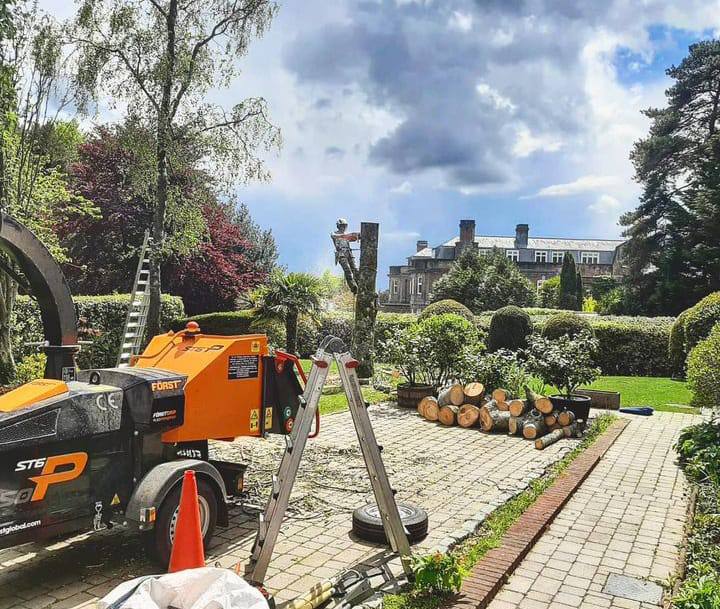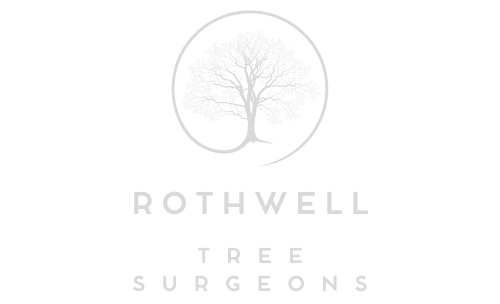Why Is My Tree Leaning — and Should I Be Worried?
Introduction
A tree leaning in your garden might appear charming or characterful at first glance—but it can also be a sign of something more serious. While not every lean means immediate danger, some situations do call for professional attention. At Rothwell Tree Surgeons, we’ve helped homeowners across Rothwell and Northamptonshire assess the safety and stability of leaning trees, ensuring peace of mind and protecting nearby property.
In this article, we explain the most common causes of a leaning tree, when to be concerned, and why a professional tree assessment is often the best next step.
Common Reasons Trees Lean
Not all leaning trees are problematic—some have grown that way naturally over time. However, several factors could be at play:
1. Uneven Light Exposure
Trees grow towards the sun (a process called phototropism). If one side of a tree receives more light than the other, it may gradually tilt in that direction.
2. Wind and Storm Damage
Heavy winds, especially in saturated soil, can cause trees to shift in the ground. After storms, a previously straight tree might suddenly lean due to root movement or structural damage.
3. Weak Root System
Young trees or trees planted in shallow or compacted soil may develop poor root structures, making them more prone to tipping. This is particularly risky if the roots have begun to lift or are visibly exposed.
4. Soil Erosion or Instability
If the ground beneath a tree is eroding—perhaps due to water runoff or construction—the base may become unstable, resulting in a noticeable lean over time.
5. Structural Imbalance
A tree with a lopsided crown or one-sided pruning history may lean due to uneven weight distribution. This makes the tree more vulnerable in high winds or during periods of heavy rainfall.
When Should You Be Concerned?
A mild, gradual lean may be harmless—but a sudden or worsening lean is cause for concern. Here are some red flags that require professional assessment:
- Cracks in the soil around the base of the tree
- Exposed or lifting roots
- Cracking or splitting in the trunk or branches
- Leaning towards a structure (house, shed, vehicle, etc.)
- A lean that appeared quickly, especially after bad weather
These signs could indicate a risk of collapse, particularly in mature trees or those located near high-traffic areas.
What a Professional Tree Surgeon Will Do
At Rothwell Tree Surgeons, we start by thoroughly inspecting the tree’s root system, trunk integrity and surrounding soil. Depending on the severity of the lean, we may recommend one of the following:
- Cabling or bracing to stabilise the tree safely
- Crown reduction to reduce weight and wind resistance
- Repositioning for younger trees if the lean is recent
- Removal, only if the tree poses an unmanageable risk
Our aim is always to preserve healthy trees where possible—without compromising safety.
Why Acting Early Matters
The longer a structural issue is left unchecked, the harder it becomes to correct. A leaning tree that might have been easily stabilised could eventually require full removal if the root plate becomes too compromised. This makes early intervention both safer and more cost-effective.
Conclusion
A leaning tree doesn’t always mean disaster, but it should never be ignored. Understanding the cause and taking action early can prevent property damage, injury, or unnecessary tree loss.
If you’ve spotted a leaning tree on your property in Rothwell or anywhere across Northamptonshire, contact Rothwell Tree Surgeons today. We’ll provide honest advice, practical solutions, and professional care that puts safety and tree health first.
Call us on: 01536 903 994
Click here to find out more about Rothwell Tree Surgeons
Click here to complete our contact form and see how we can help with your tree needs.

